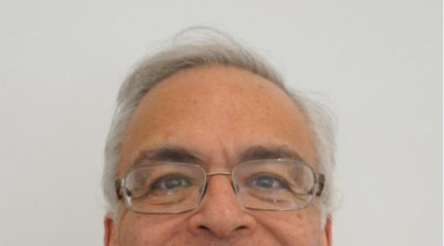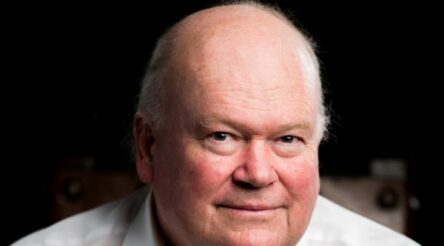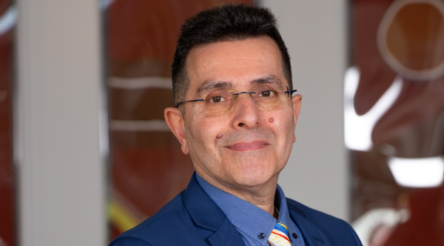Defence industry central to national security – by Ben Hudson

BAE Systems Australia turned 70 this month, making it one of Australia’s oldest, largest and fastest growing defence manufacturers. Here Ben Hudson reflects on the contribution of the defence sector in Australia to national security and prosperity.
All too often I believe we have made a point of focusing on major programme challenges, without reflecting on what has been achieved by so many Australians over the years.
BAE Systems Australia is officially 70 years old, but can trace its history in Australia back to the 1870s and the Alfred graving dock in Melbourne, a monumental construction of Victorian bluestone some 143m long.
The shipyard that grew around the graving dock has manufactured more than 80 vessels during the past century and launched the careers of some of the greatest contributors to Australia’s defence sector.
Dr John White is but one example who, in his 30s, led the AMECON team at Williamstown to secure a contract in 1989 to build the navy’s new Anzac class frigates.
While naval shipbuilding is based now in Osborne, South Australia, and Henderson in Western Australia, BAE Systems Australia is still supporting our Anzac class frigates.
This programme has allowed many engineers and tradespeople to hone their skills and provide a valuable contribution to both our national security and prosperity.
During the past 70 years, BAE Systems Australia has developed, delivered and supported a range of critical capabilities in support of the Australian Defence Force.
We often speak of marquee programs such as the Jindalee Operational Radar Network, the Nulka active decoy, and support of the Royal Australian Air Force Hawk Lead in Fighter; but the rich tapestry of our work in the defence sector stretches much further.
With our numerous partners, we have been at the heart of pioneering work in the autonomous systems field, electronic warfare, communications and even support of Collins-class submarine periscopes.
It is not just BAE Systems Australia that has a storied engineering and manufacturing history here in Australia though – some of the achievements we should be proudest of are from others in our sector.
The Australian Bushmaster protected mobility vehicle, designed and built by Thales in Bendigo, has saved many lives and been exported around the globe, and ASC has matured the Collins submarine fleet into one of the most capable in the world.
In the ACT, Ian Croser and the team at CEA Technologies has developed world leading radar systems that are the envy of many and in Queensland, Rob Nioa has created a formidable global business in the munitions area, which started from humble beginnings at a service station in the 1970s.
These are Australian stories we can be truly proud of. These achievements are supported by a vibrant academic sector and the applied research of so many in the Defence Science and Technology Group.
While we should be proud of our achievements, it is the future that is most exciting. Every day thousands of young Australian engineers and world-class manufacturing professionals are working on developing and deploying the capabilities that the Australian Defence Force will wield to secure our nation in the coming years.
In Osborne, the Hunter class frigate is taking shape and the high quality being produced in the shipyard has become the envy of many international experts who have visited during the past 18 months.
Hunter is the most advanced surface combatant going into service anywhere in the world and has a unique mix of high-end anti-submarine warfare capabilities, along with an unparalleled air warfare suite that will see it become a flexible capability for our navy and formidable deterrent to help secure our nation.
Our Red Ochre Autonomy and Sensors team is working in partnership with Boeing Australia to mature the MQ-28 Ghost Bat uncrewed air system, which will provide revolutionary air combat capabilities to the Royal Australian Air Force.
The wider BAE Systems Australia autonomous systems team is also working with Innovaero in Perth to rewrite the aviation rulebook in developing the STRIX uncrewed autonomous aerial system that takes off like a helicopter, but flies like a conventional aircraft.
Our Jindalee Operational Radar Network team is working with the Defence Science and Technology and Capability Acquisition and Sustainment groups on next generation capabilities for the radar network to secure our northern approaches and our Red Ochre team is working with the army on autonomous systems of the future.
It is easy to focus on the challenges the sector has in delivering some of the most technically advanced endeavours humans have undertaken; however, all Australians should be rightly proud of the work that many of your sons, daughters, friends and relatives do in supporting our nation.
I have spent the best part of 15 years working in the heart of Europe’s manufacturing sector in Switzerland, Germany and the UK, and I can attest that Australia is the equal, and in many areas, superior to the best in the world.
Engineering and manufacturing is alive and well in Australia, but we do need to support it, though, if it is to thrive in the coming decades.
Ben Hudson is Chief Executive Officer, BAE Systems Australia. Prior to joining BAE Systems, Ben led the global vehicle systems portfolio for Rheinmetall, based in Germany, held senior roles with General Dynamics, based in Switzerland and served as an Officer in the Australian Army, including active service in East Timor.
Picture: Ben Hudson
@aumanufacturing Sections
Analysis and Commentary Awards Defence Manufacturing News Podcast Technology Videos










